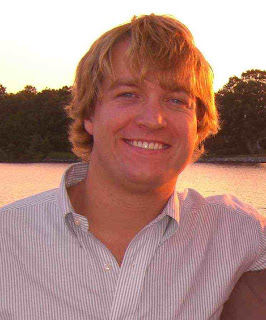The trip took all day though with planning it can be done in just a few hours. Unfortunately when we arrived all the ferry tickets were sold out for weeks and we had to wait around in hopes of cancellations. Fortunately this gave us time to peruse a collection of posters and signs from various protests in the struggle for independence.
The photo below is a picture of Capetown and the iconic Table Mountain from Robben Island.

Our guide, a former political prisoner at Robben Island, wore sunglasses all the time, having been nearly blinded by too many bright days spent in the lime quarry below. The prison, ironically, served as a place of education for many. Older prisoners taught uneducated prisoners reading, writing and more advanced topics, often in the small, carved shelter in the quarry, pictured below.

The island is quite a contradiction though and its abominable history obscures what is otherwise a beautiful place. Whether its the classic view of Capetown, the picturesque lighthouse or the wildlife (penguins, rabbits, antelope, birds) meandering by, a maximum security prison seems like an injudicious use of such a pleasant place.
 The next morning we woke up early to climb Table Mountain, the flat topped mountain in the first photo and Capetown's most iconic landmark. We chose the Platteklip Gorge route (pictured below) as it was the best marked and some other routes can get treacherous.
The next morning we woke up early to climb Table Mountain, the flat topped mountain in the first photo and Capetown's most iconic landmark. We chose the Platteklip Gorge route (pictured below) as it was the best marked and some other routes can get treacherous.
The route starts at the lower cable car station, roughly 300 meters above sea level and continues to the top, roughly 1,000 meters above sea level. The photo below is Capetown's City Bowl, or main downtown area, as seen from halfway up the Platteklip Gorge route. Robben Island is just barely visible as the dark speck in the water on the left side of the photo. The climb up took nearly two hours but the descent took only four minutes - we took the cable car. Afterwards we headed to the Green Point Market, which is teeming with vendors selling carvings, paintings, jewelry and a variety of other trinkets and picked up a continent's worth of souvenirs in one spot.

The next morning we were up and early again but this time for something less physically demanding, a tasting tour through Cape Town's nearby wine region.


We had a great time exploring four different vineyards but my favorite, by far was Fairview Vineyards. The makers of Goats do Roam (the number one selling African wine in the US) won me over with generous cheese tasting options and, of course, a goat photo opportunity. We spent that evening taking care of chores and having dinner on Long Street.

We took a bus tour of the cape the next morning. Our first stop was Hout Bay, originally a logging town it is now a fishing town and great photo opportunity.

The drive from Hout Bay to the southern peninsula follows Chapmans Peak Drive, one of the most scenic drives in the world. The drive wraps around Chapman's Peak, following the coastline, along sheer cliffs and offers breathtaking views of sandy beaches and rocky shorelines.

The next stop was Boulders Beach, near Simon's Town.

Although Boulder's beach is an aesthetic pleasing town with a great swimming beach, most tourists only stop by to see the colony of African Penguins.

The African Penguins are also known as Jackass Penguins, so called for their donkey like hee-haw call.
Boulder's Beach is probably one of the few places in the world where you can find this road sign.

Our second to last stop was the Cape of Good Hope National Park. Our guide dropped us off near the gate and we bicycled six kilometers in to the visitors center. We saw an antelope and a great deal of apparently very rare shrubbery but the most interesting sighting was a few wild ostriches.

The photo above is of Cape Point, taken from the nearby lighthouse. The Cape is not the most southern point in Africa nor is it the point where the Indian and Atlantic oceans meet, as commonly believed - it is, however, the most South-Western point of the African continent.

The next day we walked around Cape Town, exploring some of the older buildings in particular, the Castle of Good Hope. Originally built in 1666 by the Dutch East India Company, the Castle is the oldest building in Africa.

There are no longer any soldiers in the Castle but it is home to the Castle Military Museum and an excellent collection of antique furniture and paintings. The cannon below is part of that collection - note the A VOC logo denoting the Amsterdam chapter of the Dutch East India Company.

We spent that afternoon indoors, escaping from afternoon rain showers. The sky cleared up shortly before sunset and we decided to explore two of Capetown's western suburbs, Camps Bay and Clifton Beach.

The three sunset photos were all taken in Clifton, although the beach visible in the second photo (below) is Camps Bay.

We mistakenly asked to be dropped off at Clifton, believing it to be the one with more restaurants. Unfortunately we found ourselves among high end housing without a restaurant in site but with some help from friendly locals, we were able to enjoy a great sundowner.

The next morning we were up early and excited to be heading to Durban to meet up with Ellie's friends, Justin and Nathan!
We did a lot in Cape Town but that was only possible because we had help - a lot of it. Thank you, Meri for your seemingly endless supply of street level knowledge about Cape Town and basically planning my week there.


No comments:
Post a Comment